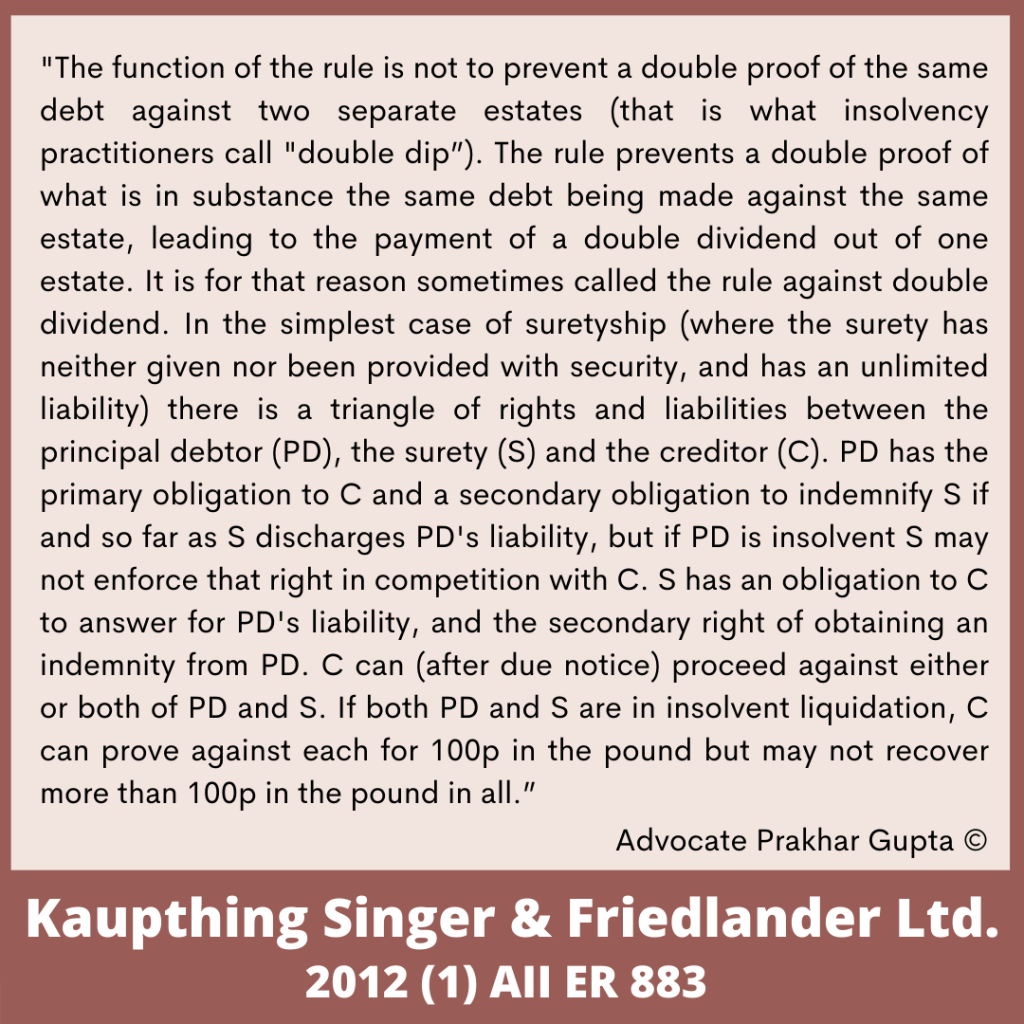Hon’ble Supreme Court of United Kingdom on relationship between creditor, principal debtor, and surety.
“The function of the rule is not to prevent a double proof of the same debt against two separate estates (that is what insolvency practitioners call “double dip”). The rule prevents a double proof of what is in substance the same debt being made against the same estate, leading to the payment of a double dividend out of one estate. It is for that reason sometimes called the rule against double dividend. In the simplest case of suretyship (where the surety has neither given nor been provided with security, and has an unlimited liability) there is a triangle of rights and liabilities between the principal debtor (PD), the surety (S) and the creditor (C). PD has the primary obligation to C and a secondary obligation to indemnify S if and so far as S discharges PD’s liability, but if PD is insolvent S may not enforce that right in competition with C. S has an obligation to C to answer for PD’s liability, and the secondary right of obtaining an indemnity from PD. C can (after due notice) proceed against either or both of PD and S. If both PD and S are in insolvent liquidation, C can prove against each for 100p in the pound but may not recover more than 100p in the pound in all.”
For More Information Contact Advocate Prakhar Gupta

